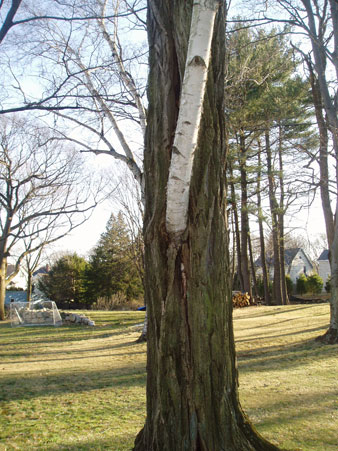Deer Tick Control
The coastal Northeastern region is one of the extreme hot spots in the world for Lyme disease. Eager Beaver Tree Service can dramatically reduce exposure to your family and pets of disease-carrying ticks in an environmentally friendly and responsible way.
We target deer ticks with an advanced generation Pyrethroid lawn application that is based on the insecticidal qualities of chrysanthemums. When dry (twenty to thirty minutes) it is no longer transferable to people or pets by rain, dew or wet feet. Our applications have excellent residual activity and are photodegradable, breaking down in natural sunlight.
The Journal of Medical Entomology reported in January 1993 a 92% reduction in deer tick populations in properly treated residential areas. Several serious diseases are spread to people and other animals by the deer tick. Erlichiosis, Babesiosis and Lyme disease are causing profound health issues for many people and pets. If the threat of Lyme or other tick borne disease inhibits your enjoyment of your property, we can help.
Results are guaranteed.
——–
Written by Doug Paulding
The past several winters have been very kind to the deer tick. In a typical Westchester/Fairfield winter we get snow cover with a few short windows of single digit days. Bitter cold temperatures are lethal to the deer tick. A blanket of snow will insulate and protect ticks (wood ticks also) and reduce the expected seasonal mortality. Snow cover is very pretty but it helps ensure tick populations in the coming growth season.
I am not a scientist. I am a college graduate (U Mass. Amherst ‘80) with a few science courses on my transcript. We treat about 250 properties for ticks in Westchester and Fairfield counties and beyond each with its own particular flora and fauna, neighboring terrain, and animal and human population density which are all factors involved in determining the risk of ticks.We do have some clients who insist on monthly treatments. They have usually had first hand experience with Lyme disease and are in the highest risk areas of Westchester and Fairfield counties. For these people, finding even one tick would be unacceptable. The every other month client has to monitor for ticks. Because no product provides 100% kill rate, tick checks and common sense are an essential component of tick control and disease prevention.
A few points of interest from the field. Although the previously mentioned study cited a 92+% kill rate for Tempo 2, the product we use, we are finding that clients just aren’t finding ticks after applications. It is important to saturate lawns, shrubbery and woodland areas to provide control. Backpack sprayers, whether motorized or not, do not deliver the volume of pressure to provide acceptable control. One local company that uses backpack sprayers is delivering about one gallon per acre. The reduced delivery pressure and volume makes it impossible to blow through thick grasses, pachysandra and forest litter. We have found 650 pounds per square inch delivery pressure necessary to provide saturation and control. Their prices are lower but pest control material used and control is considerably lower also.
If you are considering having pesticides applied for control of ticks, Eager Beaver Tree Service can give you peace of mind. We use a product called Tempo 2, with active ingredient cyfluthrin, an advanced generation pyrethroid. It is not water soluble so once it dries it will not be washed way by even the heaviest rains. It will not leach laterally or vertically so when applied properly it is not a threat to ground or surface waters. It is photo-degradable, breaking down in natural sunlight It also has an extremely low higher-life form mortality rate. After application, the property should look as if a soaking morning dew were on it. This dries quickly, usually within a half hour. After it dries, people and pets can have run of the property. It is the product of choice when working in close contact with people and animals. Tempo 2 is also registered for indoor control of insect pests and control inside commercial kitchens and food storage areas.
Written by Doug Paulding and reprinted from an American Lyme Disease Foundation booklet


